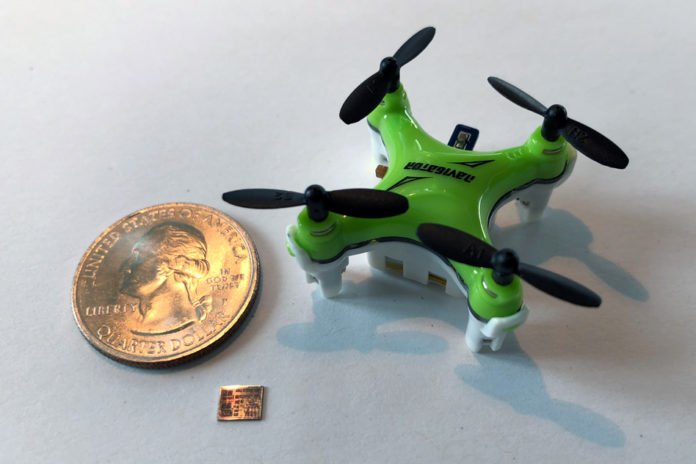Last year, MIT scientists had developed a chip to help honeybee-sized drones navigate. Now they have upgraded the chip in both size and power consumption.
The new computer chip, named “Navion,” is of the span of a LEGO minifigure’s footprint— and expends only 24 milliwatts of power, or around 1 one-thousandth the vitality required to control a light.
Utilizing this modest amount of power, the chip can process progressively camera pictures at up to 171 frames per second, and in addition inertial estimations, both of which it uses to figure out where it is in space. The analysts say the chip can be coordinated into “nanodrones” as little as a fingernail, to enable the vehicles to explore, especially in remote or inaccessible places where worldwide situating satellite information is inaccessible.
Karaman, who is a member of the Laboratory for Information and Decision Systems and the Institute for Data, Systems said, “I can imagine applying this chip to low-energy robotics, like flapping-wing vehicles the size of your fingernail, or lighter-than-air vehicles like weather balloons, that have to go for months on one battery. Or imagine medical devices like a little pill you swallow, that can navigate in an intelligent way on very little battery so it doesn’t overheat in your body. The chips we are building can help with all of these.”
Through their design, the team was able to reduce the chip’s memory from its previous 2 megabytes to about 0.8 megabytes. The team tested the chip on previously collected datasets generated by drones flying through multiple environments, such as office and warehouse-type spaces.
Vivienne Sze, associate professor in MIT’s Department of Electrical Engineering and Computer Science (EECS) said, “While we customized the chip for low power and high-speed processing, we also made it sufficiently flexible so that it can adapt to these different environments for additional energy savings. The key is finding the balance between flexibility and efficiency. The chip can also be reconfigured to support different cameras and inertial measurement unit (IMU) sensors.”
Now, scientists are planning to demonstrate its design by implementing its chip on a miniature race car. While a screen displays an onboard camera’s live video, the researchers also hope to show the chip determining where it is in space, in real-time, as well as the amount of power that it uses to perform this task. Eventually, the team plans to test the chip on an actual drone, and ultimately on a miniature drone.
The team, co-led by Vivienne Sze, associate professor in MIT’s Department of Electrical Engineering and Computer Science (EECS), and Sertac Karaman, the Class of 1948 Career Development Associate Professor of Aeronautics and Astronautics. Scientists presenting their design this week at the Symposia on VLSI Technology and Circuits.
